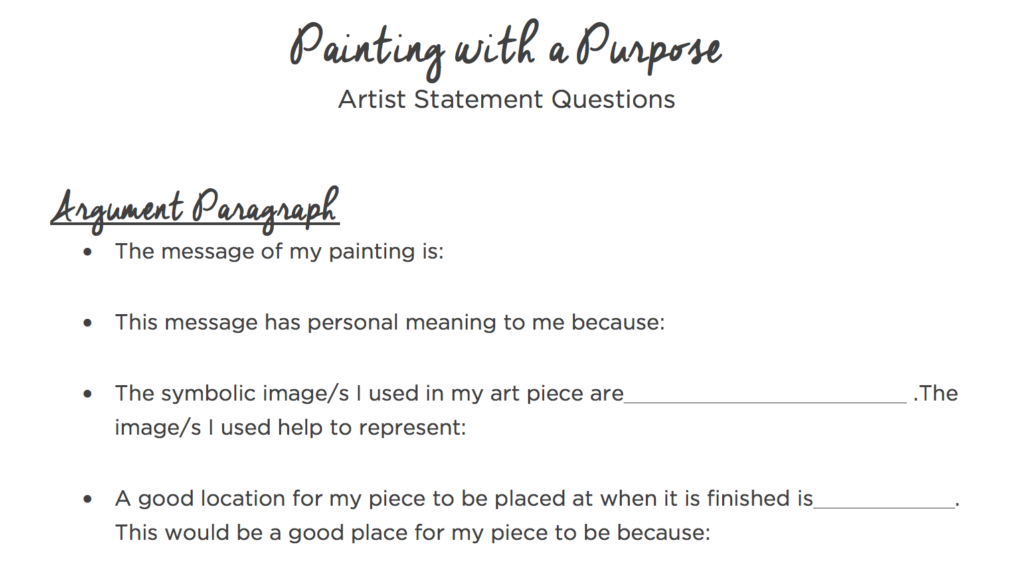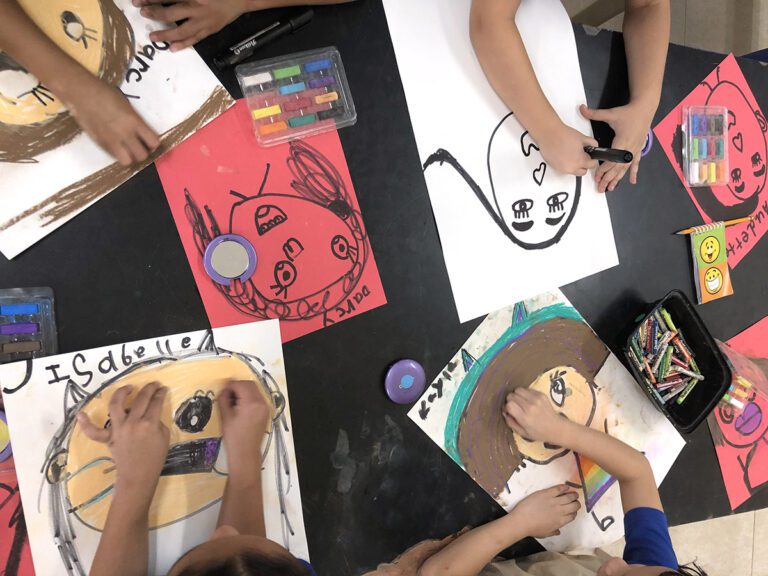Coaching students to write artist statements is important for several reasons. No matter what the next steps in life may be for each student, writing will likely play a role in success. Artists need to apply for grants to receive funding. Students must write reflective cover letters when applying to college. But what are the best ways to help our students make artist statements more powerful and meaningful? Let’s take a look at the essential components in the art assignment and artist statement.
Assignment Requirements
Many steps can be taken through assignment requirements and teaching strategies to help enhance artist statement quality. The first steps are the assignment requirements:
Choice Encourages Voice
For an artist statement to be unique and deeply personal, the art assignment must first lend itself to choice. Open-ended art projects allow students to solve artistic problems in countless ways. The artist statement is an opportunity for a student to explain the story behind the art piece. Art assignments that provide choice will motivate students to write about these choices and why they made them. It is also helpful to probe students about their choices. Here are some sample questions:
What message does your art piece communicate?
What is your intention for viewers who see this piece?
What story has led to the development of this piece?

Artistic Conventions Need Explanation
Often, art assignments require students to implement various artistic conventions. While the conventions themselves can be fascinating to see in the work, reading about where they were used can be the opposite. Push students to go beyond where techniques were used. Have students explain why they used them and the effect these techniques create in the piece. What purpose do these conventions serve for artists? What allusions do these conventions produce?

Reflection
One paragraph of the artist statement can be dedicated entirely to self-reflection. Some essential questions around reflection usually ask students to acknowledge strengths in their work and areas they can continue to improve. Taking their improvements one step further can be powerful. Ask students what they need to do in order to make this improvement. Develop a system for critique where students can actually give each other written feedback. Ask students to write about the feedback they received and how feedback impacted the choices they made.
Artists often collaborate with clients, so receiving and using feedback is an authentic skill of the field. It is also useful to have students create goals for each day during the last week or so of their artistic process. Have students write down these goals. When writing artist statements, they can reflect on whether they reached them or not and how they could better focus to reach their goals next time.
Teacher Strategies
The following methods can help all students achieve successful, meaningful artist statements:
Chunking
Breaking the artist statement task into smaller pieces can help students immensely. For example, if your artist statement is made up of four individual paragraphs, give them to your students one at a time. When an art assignment lasts two to three weeks, one strategy is to have students write one paragraph per week. The paragraph about the meaning of the work can be completed before the work is finished. Students might not have every technical choice made, but if they have their content established, they can begin to tell the story behind the work. The handout below details how I break up artist statements.
Download a Copy of the Artist Statement Handout Now!Sentence Starters
Many students struggle with writing those long paragraphs, but sentence starters can help. Use a sentence starter for each question being asked in the artist statement. Here are a couple examples:
The first convention I used in my piece was .
The effect that this creates is .
My art piece is intending to communicate .
If you want to go really in-depth with a variety of sentence starters, you can download this list of examples I use in my classroom.
Download a Copy of the Sentence Starters Now!Google Docs
Google Docs is one of many different tools that allow teachers to provide feedback. The idea with Google Docs, or any other method that gives teachers access to typed work, is that we can ask questions and make comments in real time on student work. In today’s digital age, most educators are probably at a place where artist statements are primarily created on a computer. It is far more effective to use Google Docs over Microsoft Word because the teacher can be interactive with the student work. This feedback is critical to the revision process.

Revision
After students receive peer and teacher feedback, embedding the expectation of revision is paramount. Most students do not read their work after they finish their first draft. Besides catching numerous mistakes, revision also fosters more rigor and a higher quality statement. When students give shallow answers, ask them to provide more detail or reflection. Revision is not a meaningless task, but a way to push students to dig a bit deeper. Whether they are applying for college or in competition with numerous other artists for a grant, more often than not the better writer wins.
Writing artist statements can feel daunting and sometimes disconnected for students. While practicing this skill often is important, ultimately it’s the quality of an artist statement that is most important. Giving students choice, ample opportunities for reflection, and demanding the rigor of revision will help your students’ artist statements become powerful and purposeful.
What strategies do you use to compose student artist statements?
What tips would you add to this list?
Magazine articles and podcasts are opinions of professional education contributors and do not necessarily represent the position of the Art of Education University (AOEU) or its academic offerings. Contributors use terms in the way they are most often talked about in the scope of their educational experiences.







